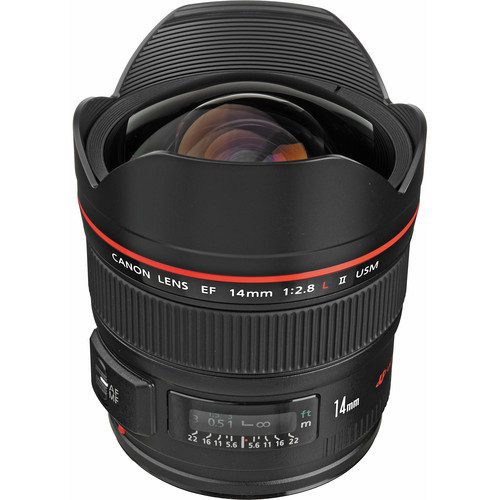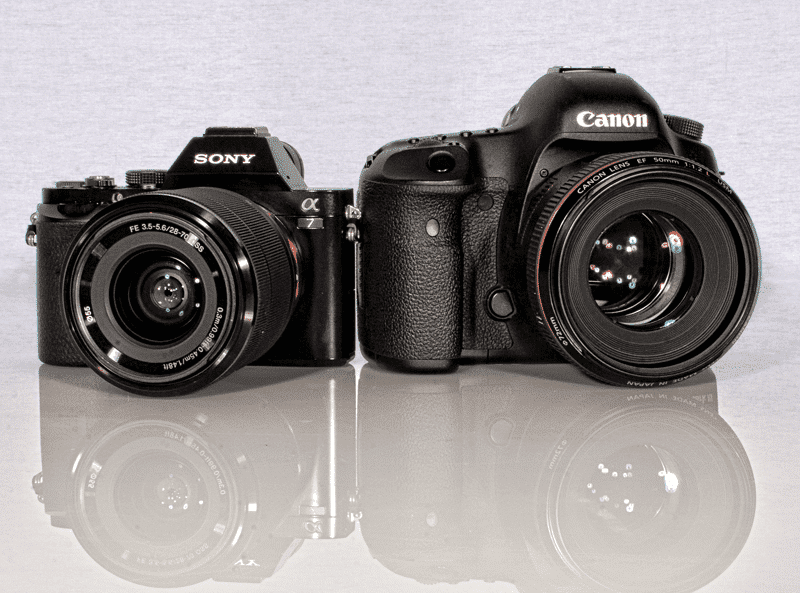The Role of Innovation in Business Strategy
Innovation plays a critical role in shaping effective business strategies across various sectors. Here are some key points highlighting its importance:

1. Competitive Advantage
- Differentiation: Innovative products or services can set a business apart from competitors, creating a unique selling proposition (USP).
- Market Leadership: Companies that innovate often become market leaders, shaping industry standards and consumer expectations.
2. Customer Satisfaction
- Meeting Needs: Innovation in helps businesses better understand and respond to customer needs, enhancing customer experience and loyalty.
- Personalization: Tailoring products and services through innovative technologies (like AI and data analytics) can significantly improve customer satisfaction.
3. Adaptation to Change
- Market Dynamics: Innovation allows businesses to quickly adapt to changing market conditions, consumer preferences, and technological advancements.
- Resilience: Innovative companies can better withstand economic downturns by pivoting to new strategies or products.
4. Cost Efficiency
- Process Innovation: Streamlining operations through innovative practices can reduce costs and improve efficiency.
- Resource Optimization: Innovative technologies can help in better resource management, minimizing waste and maximizing output.
5. Growth Opportunities
- New Markets: Innovation can lead to the development of new products or services, opening doors to untapped markets.
- Partnerships and Collaborations: Innovative ideas can foster collaborations with other businesses, leading to new growth avenues.
6. Employee Engagement
- Culture of Innovation: Encouraging innovation creates a dynamic workplace culture, attracting and retaining talent who are eager to contribute and grow.
- Collaboration and Creativity: An innovative environment fosters teamwork and creative problem-solving, leading to better organizational outcomes.
7. Sustainability and Social Responsibility
- Green Innovation: Businesses that focus on sustainability through innovative practices can enhance their brand reputation and appeal to environmentally conscious consumers.
- Social Impact: Innovations that address social issues can create a positive impact while also fulfilling corporate social responsibility goals.
8. Technology Integration
- Digital Transformation: Leveraging emerging technologies (e.g., AI, IoT, blockchain) can drive innovation in business processes and models.
- Data-Driven Decisions: Utilizing data analytics helps businesses make informed decisions and forecast future trends, leading to proactive strategy adjustments.
9. Disruption of Traditional Markets
- Challenging Norms: Innovators often disrupt traditional industries by introducing breakthrough products, services, or business models. For example, companies like Uber and Airbnb revolutionized the transportation and hospitality sectors by leveraging technology and novel approaches.
- Creating New Business Models: Innovation doesn’t just lead to new products but can create entirely new business models (e.g., subscription services, gig economy platforms) that disrupt existing industries.
10. Revenue Growth
- Product Diversification: Innovation leads to the development of new revenue streams through diversified product lines and services. This ensures that a company is not overly reliant on a single source of income.
- Monetizing Intellectual Property: Companies that focus on innovation can also generate revenue through patents, trademarks, and licensing agreements, adding value to the organization.
11. Risk Management
- Proactive Risk Mitigation: Innovating allows companies to anticipate and mitigate risks, whether they are technological, regulatory, or market-related. By staying ahead of industry trends, businesses can reduce the chances of obsolescence.
- Business Continuity: Organizations that prioritize innovation are better equipped to pivot during crises or disruptions (e.g., adopting digital models during the COVID-19 pandemic), ensuring business continuity.
12. Global Expansion
- Cross-border Innovation: With innovation, businesses can tailor products for global markets by integrating local preferences and needs. Companies like Apple and Netflix succeed globally by innovating on a localized scale, adapting to the tastes of various regions.
- Scalability: Innovation in processes, such as cloud computing or automation, enables businesses to scale their operations more efficiently, supporting global expansion and the ability to handle larger customer bases.
13. Regulatory and Compliance Innovation
- Adapting to Regulations: As industries face increasing regulations, innovation allows companies to develop compliance solutions, whether through automated reporting, data protection measures, or sustainable practices that meet regulatory demands.
- Ethical Innovation: In highly regulated industries like healthcare and finance, innovative solutions often emerge to meet ethical standards while delivering value, such as telemedicine or fintech innovations that adhere to compliance rules.
14. Leveraging Ecosystems and Networks
- Innovation Ecosystems: Many businesses build ecosystems where various stakeholders, such as suppliers, customers, startups, and universities, collaborate to innovate. Tech giants like Google and Microsoft foster ecosystems of developers and startups that expand their platforms and capabilities.
- Crowdsourcing Innovation: By leveraging networks and external partnerships, companies can crowdsource ideas and innovations (e.g., open innovation platforms), tapping into a global pool of talent for problem-solving and idea generation.
15. Customer Co-Creation
- Customer Involvement: Many innovative companies involve their customers in the product development process, enhancing product-market fit. Co-creation platforms, where customers share ideas or vote on features, enable companies to stay aligned with customer expectations and preferences.
- Feedback Loops: Continuous feedback from customers during innovation processes helps companies refine products and services before launch, reducing failure rates and ensuring market success.
16. Agile Business Models
- Flexibility and Agility: Innovation fosters the development of agile business models that can adapt rapidly to changes in market dynamics, customer preferences, or technological advancements. Agile companies are more responsive to disruption and can shift strategies quickly.
- Rapid Prototyping: Innovative businesses often employ rapid prototyping and iteration (e.g., lean startup methodology) to test ideas in the market faster, reducing time-to-market and aligning more closely with customer needs.
17. Cultural Transformation
- Innovation Culture: Embedding innovation into the company culture leads to ongoing transformation. Organizations like Google and Amazon have built cultures where experimentation and risk-taking are encouraged, leading to continuous innovation.
- Employee Empowerment: By fostering a culture of innovation, businesses empower employees at all levels to contribute to problem-solving, driving engagement, motivation, and productivity.
18. Sustainability and Long-term Growth
- Eco-Innovation: Sustainable innovation is becoming increasingly critical as businesses are pressured to reduce their environmental footprint. Innovations in green energy, waste management, and sustainable packaging are transforming industries like manufacturing and consumer goods.
- Long-term Focus: Innovation ensures that businesses remain future-ready, positioning themselves for long-term growth by continuously evolving to meet future challenges, such as climate change, population growth, and resource scarcity.
19. Brand Equity and Reputation
- Innovation as a Brand Value: Companies that are known for their innovation, such as Tesla or Apple, enjoy strong brand equity. Innovation builds consumer trust and loyalty, as customers associate the brand with cutting-edge technology and forward-thinking solutions.
- Reputation for Innovation: A company’s reputation as an innovator can attract not only customers but also investors, media attention, and partnerships, creating a positive feedback loop that strengthens market position.
20. Innovation in Supply Chain and Operations
- Supply Chain Optimization: Innovation can significantly improve supply chain efficiency by leveraging technologies like automation, blockchain for transparency, and AI for predictive analytics. This leads to better demand forecasting, reduced costs, and improved supply chain resilience.
- Operational Efficiency: Process innovation helps businesses streamline operations. Techniques like Lean Manufacturing or Six Sigma use innovation to eliminate waste, enhance productivity, and reduce costs without compromising quality.
21. Leveraging Data for Innovation
- Data-Driven Innovation: Companies that collect and analyze large amounts of data (big data) can gain insights into consumer behavior, product performance, and market trends. This enables innovation by refining existing products or creating new ones that better meet market demands.
- Predictive Analytics: AI-powered analytics tools allow businesses to forecast trends, enabling proactive innovation. By anticipating customer needs or market shifts, businesses can innovate ahead of competitors.
22. Fostering Entrepreneurial Mindsets
- Intrapreneurship: Encouraging employees to think and act like entrepreneurs (intrapreneurship) can lead to internal innovations. Allowing employees to experiment and develop new ideas within the company can result in breakthrough innovations and new revenue streams.
- Startups and Spin-offs: Large organizations often create startups or spin-off companies to pursue innovative projects outside the scope of the main business. This ensures that innovation can occur without disrupting the core operations of the company.
23. Human-Centered Innovation
- Design Thinking: By focusing on human-centered design, companies can innovate in ways that prioritize user experience and solve real-world problems. Design thinking, a process that involves empathy with users, prototyping, and iterative testing, is a key driver of customer-focused innovation.
- Emotional Connection: Innovation that connects emotionally with customers can create long-lasting relationships. Products or services that enhance convenience, reduce friction, or provide personalized solutions lead to greater customer satisfaction and loyalty.
24. Collaborative Innovation Models
- Open Innovation: Companies like Procter & Gamble have embraced open innovation, where they partner with external innovators (startups, research institutions, etc.) to co-develop new products. This expands a company’s innovation capacity beyond internal resources.
- Innovation Hubs and Labs: Many businesses establish innovation hubs or research labs where cross-functional teams work on exploring new technologies or disruptive ideas. These hubs foster collaboration and allow for the incubation of new solutions.
25. Innovation for Digital Transformation
- Adoption of Emerging Technologies: Innovation is key to successfully implementing digital transformation strategies. Whether it’s integrating AI, blockchain, the Internet of Things (IoT), or robotics, businesses must innovate to remain competitive in the digital era.
- Automation and AI: Leveraging automation and AI innovations in various business processes—from customer service (e.g., chatbots) to manufacturing (e.g., robotic process automation)—increases efficiency, reduces human error, and drives down costs.
- Cloud Computing: Cloud-based innovations provide businesses with flexibility, scalability, and cost savings by offering virtual services and storage on demand. Companies are increasingly adopting cloud technologies to innovate faster without the constraints of traditional IT infrastructure.
26. Innovation in Marketing and Sales
- Innovative Marketing Strategies: Businesses that innovate in marketing (e.g., influencer marketing, augmented reality experiences, or personalized digital ads) can create more engaging and effective campaigns that resonate with their target audience.
- Data-Driven Sales: Innovations in customer relationship management (CRM) software, data analytics, and automation tools allow sales teams to better understand customer needs, leading to more personalized and effective sales pitches.
27. Sustainability-Driven Innovation
- Circular Economy Models: Businesses are increasingly innovating in line with the circular economy model, which focuses on reducing waste and reusing resources. This approach drives innovations in product design, packaging, and waste management, resulting in both environmental and economic benefits.
- Sustainable Products: Innovation in sustainable materials and production methods (e.g., biodegradable plastics, renewable energy sources) can enhance a company’s eco-friendly credentials while meeting the growing demand from consumers for sustainable options.
28. Customer-Centric Innovation
- Personalization at Scale: With advanced technologies, businesses can innovate to offer personalized products or services at scale. AI and machine learning enable companies to analyze customer data and deliver customized experiences, whether through product recommendations or tailored pricing models.
- Customer Journey Innovation: Understanding and optimizing every touchpoint in the customer journey is a key innovation area. Companies that innovate in how they engage customers across various channels (e.g., omnichannel strategies) can create seamless and integrated experiences.
29. Product Innovation for Longevity
- Extending Product Lifecycles: Innovation helps companies not only create new products but also extend the life of existing ones. By adding new features, improving quality, or offering better after-sales service, businesses can keep mature products competitive and profitable.
- Subscription Models: Innovations in pricing and product access, such as subscription models, ensure recurring revenue and long-term customer engagement. This shift from ownership to access (e.g., Netflix, Spotify) has transformed several industries.
30. Ethical and Inclusive Innovation
- Inclusive Innovation: By prioritizing inclusivity, companies can innovate to serve traditionally underserved populations. This involves developing products and services that are accessible and affordable to a broader audience, including those in emerging markets or with disabilities.
- Ethical Innovation: As consumers and stakeholders become more conscious of ethical business practices, innovation in areas such as fair labor practices, ethical sourcing, and transparency has become essential for maintaining trust and loyalty.
31. Innovation in Leadership and Decision-Making
- Innovative Leadership Models: Leaders who foster a culture of experimentation, learning, and adaptability enable their organizations to innovate continuously. Decision-making processes must also evolve to be faster, data-driven, and decentralized to support innovation.
- Cross-functional Collaboration: Encouraging cross-departmental collaboration fosters innovation by combining diverse perspectives, skill sets, and expertise, leading to more well-rounded and impactful solutions.
32. Disruption-Proofing the Business
- Future-Proofing through Innovation: Businesses that continuously innovate are better prepared for future disruptions. Whether from technological advancements, economic crises, or competitive threats, these businesses can pivot and adapt quickly, ensuring long-term survival.
- Innovation as an Antidote to Disruption: Companies like Netflix, which shifted from DVD rentals to streaming, exemplify how innovation can preemptively tackle disruptive forces and turn them into opportunities.
33. Unstoppable Competitive Advantage
- Revolutionary Differentiation: Bold innovations catapult businesses to the forefront of their industries, making them unstoppable forces that outshine competitors and create irresistible products or services.
- Market Domination: Innovators seize market leadership, shaping the future and setting new standards that competitors are forced to follow, giving them unshakable market control.
34. Superior Customer Satisfaction
- Exceeding Expectations: Innovative businesses don’t just meet customer needs—they shatter expectations with groundbreaking solutions that customers didn’t even know they needed.
- Personalization Mastery: Tailoring services with cutting-edge tech like AI and machine learning transforms the customer experience into something deeply satisfying and unforgettable.
35. Rapid Adaptation to Change
- Swift Market Mastery: Innovation enables businesses to outpace market shifts and crush obstacles, ensuring they’re always several steps ahead in a dynamic marketplace.
- Resilience Engine: Companies built on innovation become resilient powerhouses, able to pivot and thrive even when facing economic downturns or disruptions.
36. Efficient Cost Optimization
- Effortless Efficiency: Through process innovation, businesses unlock significant savings by optimizing operations, reducing waste, and turbocharging productivity.
- Resource Mastery: Innovation in resource management means companies can dominate with minimal input, maximizing output for explosive results.
37. Explosive Growth Opportunities
- New Market Domination: By embracing innovation, companies can conquer new territories and seize untapped markets, expanding their footprint and achieving unparalleled growth.
- Partnership Power: Collaborations that ignite innovation open doors to limitless possibilities, propelling businesses into uncharted territories of profitability.
38. Magnetic Employee Engagement
- Culture of Innovation: Fostering a culture where creativity thrives attracts top talent, making the business a magnet for high-performing individuals eager to drive change.
- Creative Empowerment: An innovative environment unleashes the full potential of employees, fostering an atmosphere of collaboration and breakthrough thinking.



















